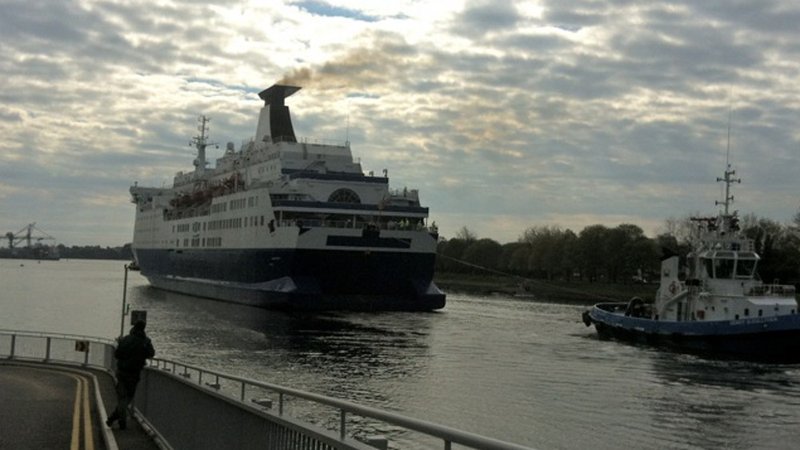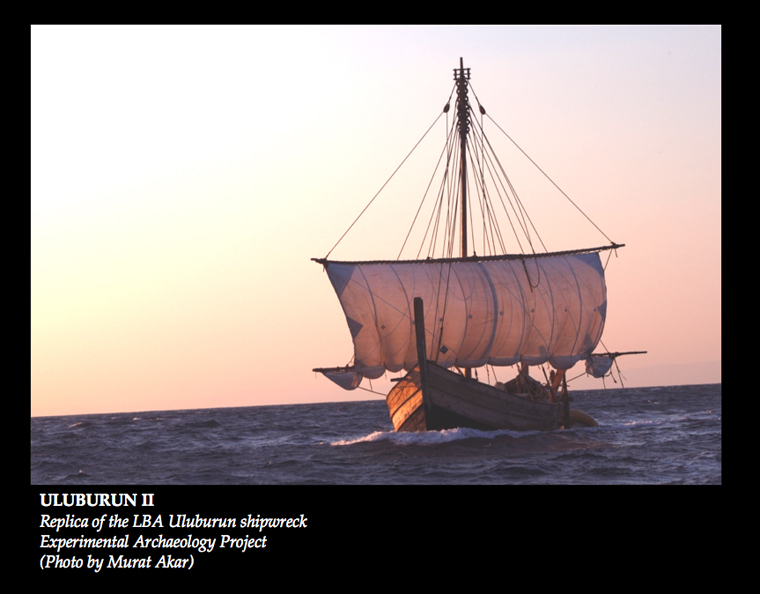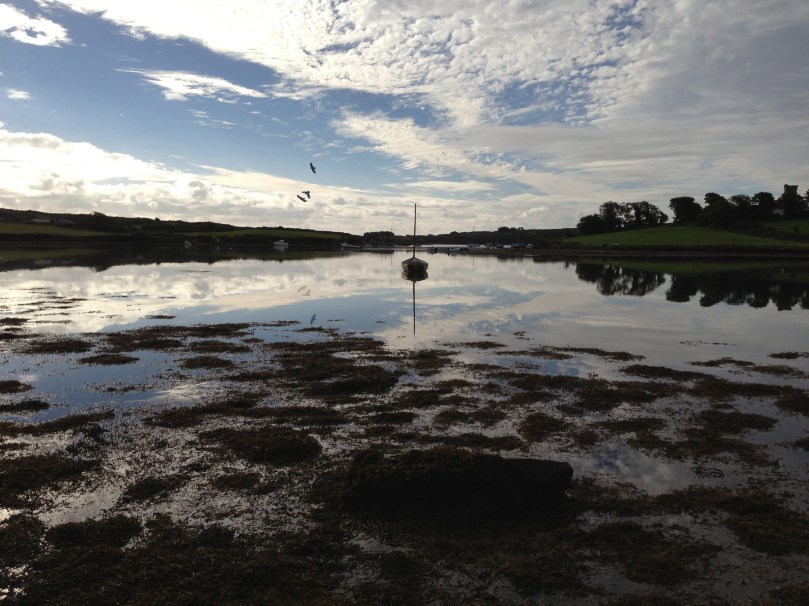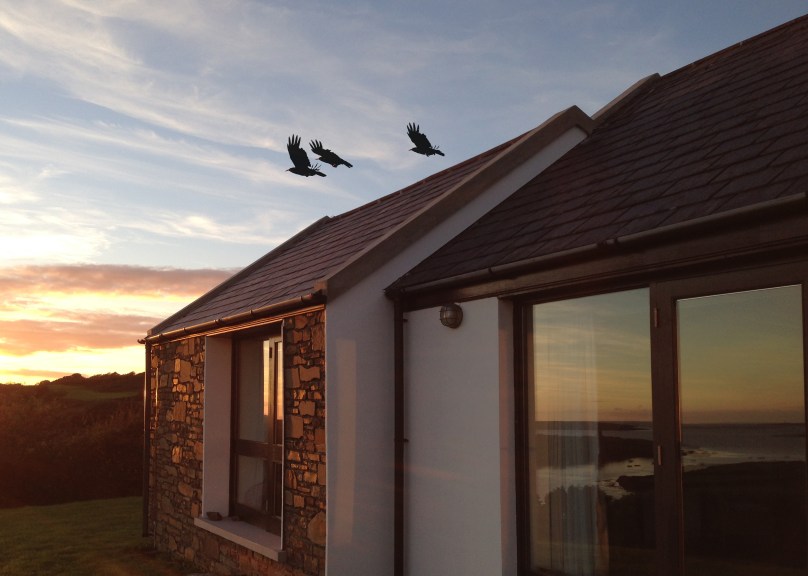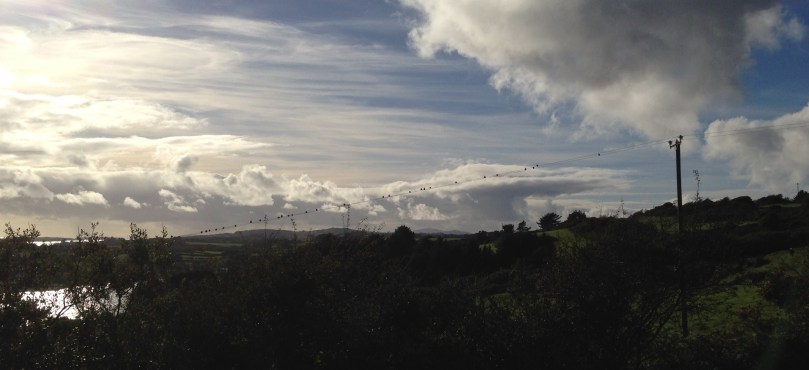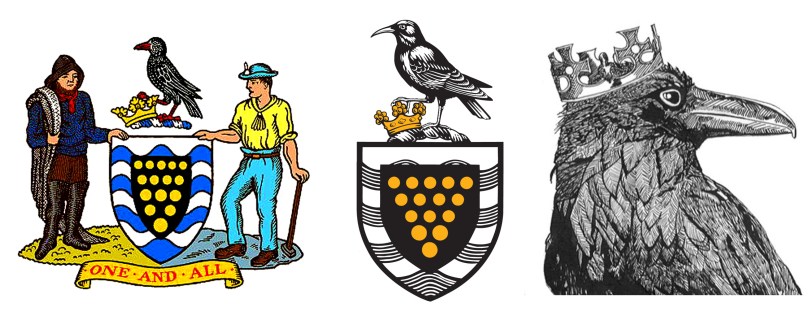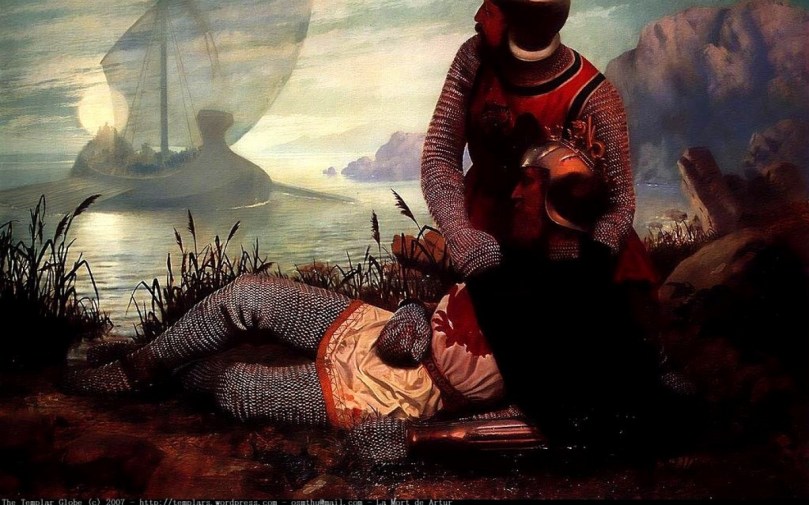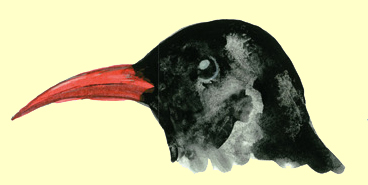You’re looking here at a 500 year-old Chough! It’s a carving from a medieval rood screen in an ancient church at Sancreed, on the West Penwith peninsula in Cornwall. There’s no mistaking it: the curved red beak and the red legs make this the most distinctive of all the corvids. This is an accurate representation but, interestingly, on the rood screen it’s in the company of other curioser beasts and beings which we perhaps would not recognise. Were the others around once in Cornwall, but now vanished? You can have a look for yourselves in next week’s post. But first, a little more about our own Choughs.
This wonderful photograph by our neighbour Oliver Nares (thank you, Oliver) shows Choughs in flight, and you can tell they are Choughs rather than any other sort of crow by the distinctive ‘finger’ feathers on the tips of their wings. But also their call is very particular – they tell you their name!
The pattern of their flight makes them stand out. The other day a chatter of twenty Choughs passed over us at Nead an Iolair and swooped down over and around Rossbrin Cove. They were wheeling and turning, performing acrobatics in the sky – even flying upside down! – clearly enjoying every moment of their airborne peregrinations. Why wouldn’t you, with such a beautiful landscape below you?
I have written about Choughs before, but there is a special relevance now, in my series on links between Ireland and Cornwall, sparked off by the West meets West exhibition currently running in the West Cork Arts Centre’s gallery in Skibbereen – Uillinn. The Chough has always been the ‘national bird’ of Cornwall – it has pride of place on the coat-of-arms of the county, alongside the fisherman and the miner:
It was somewhat ominous, therefore, when the Choughs disappeared from Cornwall, back in 1970, after a long period of decline. Attempts were made to reintroduce them artificially, over the following decades, but without success. And then, suddenly, the birds returned! It seems that changes in agricultural methods on the coasts – removing grazing cattle to inland sites – had upset their habitats. Now, following changed grazing patterns, Choughs are re-establishing themselves and – here’s the exciting thing – they have come over from Ireland to do that! It has been found that the entire new breeding stock originates from here, where the birds are plentiful. Just imagine those pioneering birds setting out to cross the Celtic Sea from Cork, Waterford and Wexford… Another gift from Ireland to Cornwall, following in the path of Saint Ciarán from Cape Clear who floated across himself (on a millstone) to convert the Cornish heathens and giving them their own patron saint, known as Piran in their own language.
Left – Chough fledglings, photo by Oliver Nares; right – Finola’s study of a bedraggled Chough sitting on our gatepost on a very wet day
In Cornwall, the Chough is said to carry the spirit of King Arthur, the Once and Future King who will return one day. In Ireland, however, Choughs are believed to start fires by carrying lighted sticks on to the roofs of houses. The latin name – Pyrrhocorax – means ‘fire raven’, perhaps because of the bright red bill and legs.
















